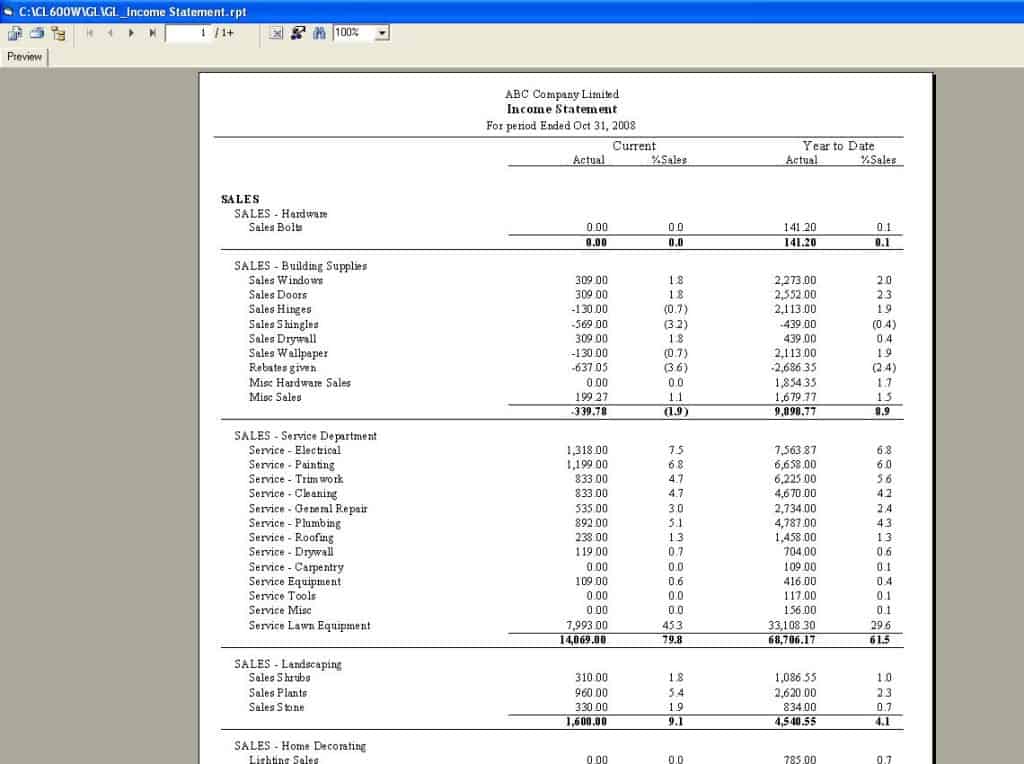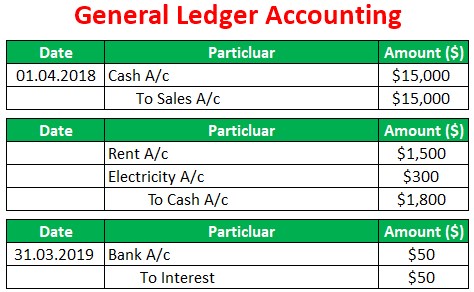

This field is used for reference UCOP reporting. This represents the UC Account associated with the KFS Account. This represents the campus associated with the Account. When the Pending Entry Approved Indicator is set to All or Approved, this field will let you know if the entry is Approved or Pending. Typically a Purchase Order Number is included in this field. The Document Number of the source system.
GENERALLEDGER EXAMPLES CODE
The Origination Code used in the source system. The Document Type Code used in the source system. Project Codes are a 10 character optional part of the accounting string that allows you to assign an identifier to a particular transaction that might span multiple accounts or organizations.Īn optional organizational reference ID that can be used. The Posting Date is the day the entry is posted on the ledger.Īn optional reference identification number assigned by organization. Indicates whether the entry is a debit or a credit to the account.įor KFS documents, the Transaction date is typically the date the document was last approved. When Debits/Credits are excluded, negatives are credits and positives are debits. The dollar amount for the particular transaction. If there is no description defined in the Accounting Line, this column will be populated with the Document Title (The Description in the Document Overview). This is typically defined in the Accounting Lines, or the title of the document. The Document Number could be a reference number from other systems if the origin code is not ‘01’.Ī description of the particular entry. Typically Origination Codes are established to represent other feeder systems.Ī unique, sequential, system-assigned number for a document. Click Here for more info.ĭocument Type is used to distinguish between the different types of transactions (e.g., General Error Corrections, Disbursement Vouchers) possible in the KFS as well as transactions that can be fed from external systems.Ī code indicating the system from which a transaction originates. Months of the year are the most obvious examples, but other periods include beginning balance, C&G beginning balance and period 13 for closing transactions.

Sub-objects codes are an optional part of the accounting string that allows the departments or units to create further distinction within objects on an account.ĭefines the different types of balances supported by the application.Īn Object Type Code is an attribute of the Object Code that identifies an object code as income, expense, asset, liability or fund balance.ĭefines the various periods to which General Ledger entries can be posted.


Accounts are the fundamental building blocks of KFS transactions, since one or more of them are always associated with a transaction.Īn optional element of the accounting string that allows you to track financial activity within a particular account at a finer level of detail.Ī four character code assigned to transactions to classify the transaction as a specific income, expense, asset, liability or fund balance transaction. The Account identifies a pool of funds assigned to a specific organizational entity for a specific purpose. The unique identification code in which the Account for this entry belongs to. Accounts and Object Codes are specific to each chart. It also defines who has management responsibilities for each chart. A Fiscal Year actually consists of half of two different calendar years (e.g., Fiscal Year 2013 is July 2012 – June 2013) ĭefines the chart that makes up the high-level structure of the Chart of Accounts. The yearly period used for the purposes of financial reporting. If a particular Entry is corrected or being corrected by a GEC, the corresponding GEC Document Number would be displayed here. KFS General Ledger Columns and their Descriptions


 0 kommentar(er)
0 kommentar(er)
